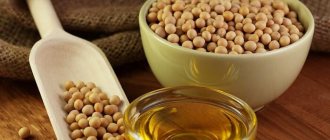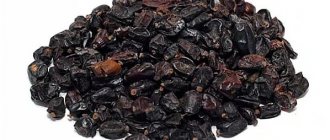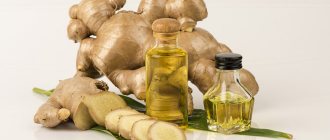The benefits of red caviar
Almost thirty percent of red caviar consists of easily digestible protein. The product also contains a vitamin complex (vitamins A, D, E, C, group B) and various minerals - sodium, calcium, zinc, iron, sulfur, phosphorus. Fatty acids are present, particularly omega-3.
Red caviar prevents the development of atherosclerosis and supports the immune system. Calcium strengthens bones, hair and nails. The product has a beneficial effect on blood circulation, lowers blood pressure and reduces the risk of developing cardiovascular diseases. Caviar increases hemoglobin in the blood.
Fry the bread in olive oil on both sides, pat dry with a napkin and rub with garlic. Peel the avocado and cut it into small cubes. Pour lime juice over the avocado pulp, pepper, salt and mix well. Place the resulting mass on the bread and place red caviar on top.

Cook the salmon broth in 30 minutes. Don't forget to pepper, salt and add bay leaf. Strain the broth through a sieve. Fry the chopped onion and garlic in olive oil and butter. When the mixture becomes transparent, add rice and fry everything for a few minutes. Then pour in half the wine and part of the broth. Stir continuously. After 20 minutes the risotto will set. Five minutes before turning off the stove, add the remaining wine and cheese. Dip the shrimp in the pesto sauce and quickly fry them (one minute at a time) on both sides. Now serving. First, place the rice, shrimp on it, and red caviar with Parmesan on top.
How to select and store
One of the main rules when choosing red caviar is price. High-quality caviar will not be cheap.
The packaging should also contain information about the composition and expiration date of the product. The composition should not contain any suspicious additives. The following ingredients are acceptable: salt, vegetable oil, food additives E400 (glycerin, which prevents caviar from drying out), E200 (sorbic acid).
Also look for the letter “P” on the packaging; it means the fishing industry index. There should be a GOST icon nearby.
Choose caviar that is sold in glass. In such a container you can evaluate the appearance of the product. The eggs should be whole, without film, and close to each other. If you see burst eggs, white sediment or blood clots, then the product is clearly spoiled.
Also, never buy the product in bulk. Unless you're in a store in the Far East (in which case, try it out).
If you still take caviar in a tin, make sure that it is intact, without dents or signs of rust. And the department itself where caviar is sold should not be in a sunny place.
Storage conditions. Keep opened red caviar in the refrigerator on the top shelf at a temperature from – 2 to – 6, for no more than five days. It is important that no water gets into the caviar, otherwise the product will become unusable in a matter of hours. A closed jar can be stored for 6 months to a year (depending on the production date).
Catalyst of youth or cholesterol bomb? Pros and cons of New Year's snacks
It’s hard to imagine a more festive appetizer on the New Year’s table or a gift for foreign friends than a jar of fresh, say, Sakhalin caviar. The beginning of January, according to tradition, turns into a real “caviar marathon” - salty canapés are sure to be at a gourmet party with friends, and at a large family feast, and in the restaurant of a young and fashionable chef, and during the intermission of “The Nutcracker” at the Bolshoi Theater.
How is traditional seafood beneficial and possibly dangerous for the body? Provided that we are talking about a truly fresh and high-quality product. (After reading, eat it!)
Red caviar treats depression
It may seem a little strange, but there is growing evidence that caviar can help banish all-out sadness. Early research suggests that people suffering from depression, bipolar disorder and other mental health problems may benefit from diets rich in omega-3 fatty acids, which are found in abundance in red caviar. A study by Andrew Stoll, MD, of people with bipolar disorder (formerly known as manic depression) noted that patients whose diet was adjusted to Omega-3 had 2.5 times fewer acute episodes and attacks. What's more, studies comparing 10 countries found that depression rates were much lower in areas where fish is a popular dietary staple.
Contraindications and harm
And this useful product may have contraindications. Properly prepared caviar is a salty product. Excess salt in the body can lead to water retention in tissues, swelling and increased blood pressure. This should be taken into account by hypertensive patients and kidney patients.
But despite all the benefits of the product, pregnant women should also be aware of moderation in their consumption of caviar. Since this is a product with a high salt content, frequent use may increase blood pressure, cause edema, and increase protein levels in the urine. All this can lead to nephropathy or eclamsia, very serious complications during pregnancy that can lead to miscarriage, premature birth, and fetal hypoxia.
For residents living far from the Far East, Sakhalin and Kamchatka, the product can cause irreparable harm. Easily digestible protein can cause an allergic reaction, including anaphylactic shock, and this is life-threatening. Individual intolerance to the product is also possible, expressed in nausea, vomiting, intestinal dysfunction and skin rashes.
Falsified red caviar is dangerous and harmful.
Firstly, caviar packaged far away in unsanitary conditions or sold by weight may contain E. coli, a yeast-like fungus that can cause quite serious intestinal disorders.
Secondly, the food additive E239 (urotropine) contained in the counterfeit product is also dangerous. This antimicrobial drug is used as a preservative. When met with an acidic environment in the stomach, methenamine turns into formaldehyde, which is a poison with a general toxic effect on the body.
Thirdly, in order not to harm the body when consuming this tasty and healthy delicacy, you must follow the following rules.
- An opened jar of caviar should be consumed within 3 days if stored in the refrigerator.
- If you bought caviar in a tin and didn’t eat it at one time, then transfer the leftovers to a clean, dry plastic container or glass jar. Store in a refrigerator. In a tin can, the product will quickly oxidize and may be harmful to health.
- Prepared sandwiches must be eaten within 3-4 hours; with longer storage, some useful substances are lost, and the caviar dries out and loses its attractiveness.
- When making sandwiches or adding it to salad, use clean cutlery; caviar itself is an excellent breeding ground for pathogenic microbes.
In conclusion, I want to say that when buying red caviar, approach your purchase very seriously. My next article will be about how to choose the right caviar.
Red caviar is obtained from Far Eastern fish from the salmon family. This family includes 13 species of fish: trout, salmon, pink salmon, chum salmon, sockeye salmon, coho salmon, Chinook salmon, sesame, whitefish, nelma, lenok, taimen, ishkhan.
Cholesterol content in red caviar
Red caviar is one of the favorite products in Russia. A jar of caviar in the refrigerator, for sandwiches or for a holiday, is a fairly common occurrence today. There is no shortage in stores. Red caviar is considered a valuable food product and is loved by many. But how do red caviar and cholesterol in the blood combine? There is an opinion that red caviar is strictly contraindicated for people with high cholesterol levels. Is it so?
Red caviar is the caviar of salmon fish: pink salmon, chum salmon, trout, sockeye salmon, salmon, chinook salmon, etc. The largest caviar is the caviar of pink salmon and chum salmon; it has an orange-yellowish tint. Trout caviar is much smaller in size and colored bright red. The caviar of different fish varies somewhat in taste, but its composition is generally very similar:
- Protein – about 30%;
- Fat – about 18%;
- Carbohydrates – about 4%.
Red caviar is quite high in calories; 100 g of the product contains about 252 kilocalories. Unfortunately, it contains cholesterol. Since caviar contains fat of animal origin, it is not without cholesterol.
However, red caviar contains many useful substances:
- Vitamins: A, B1, B2, B4, B6, B9, B12, D, E, K, PP;
- Calcium, magnesium, potassium, sodium, phosphorus, zinc, copper, iron, manganese, selenium, iodine.
Since each egg is a “fish egg,” its composition is such that it can provide a living organism with everything it needs. The beneficial properties of red caviar have long been known and are in demand in folk medicine.
Product benefits
- Caviar contains high-quality protein, which is much better absorbed by the body than the protein found in meat. Therefore, red caviar has always been recommended for people after illness and with weakened immunity.
- The iron content in caviar makes its consumption useful in the fight against anemia. Red caviar is recommended for nutrition of pregnant and lactating women.
- Red caviar in moderation helps lower blood pressure.
- Due to its iodine content, red caviar normalizes the functioning of the thyroid gland.
Calorie content of caviar. How much can you eat per day?
The hero of our article is a very high-calorie product. 100 grams of product has a calorie content of 230-250 kcal, depending on the type of fish. However, it should be borne in mind that we often consume red caviar with a sandwich and butter, which means the final calorie content is even higher. This should be taken into account by those who are planning to lose weight.
But at the same time, consuming this product can be useful for those losing weight and those with diabetes, since the glycemic index of caviar is 5 units and will not cause a sharp increase in blood sugar levels.
Despite the fact that our product is very beneficial for health, it should not be abused. It is believed that a safe and healthy dose would be no more than 5 teaspoons, the amount of caviar needed to make 2-3 sandwiches with a small amount of butter. You can eat no more than 1 sandwich at one time; you can eat two, maximum 3 sandwiches a day.
How to fast with pancreatitis at home?
- Stabilizes sugar levels for a long time
- Restores insulin production by the pancreas
Is it possible to fast if you have pancreatitis? Not only is it possible, but it is also necessary, say medical experts. But such a therapeutic process must be approached competently, observing all the rules and principles of a rescue hunger strike.
In case of exacerbation of the pathological process, control is carried out in the hospital, that is, in an inpatient setting. In the chronic form of the disease, you need to limit your menu yourself in order to prevent the recurrent course of the disease.
Equally important is the way out of fasting during pancreatitis. You cannot immediately return to your normal diet. In this case, all the measures taken will not give the desired result. It is possible that the disease will worsen.
Let's consider why fasting is necessary for chronic pancreatitis, and how many days should you fast?
Fasting for inflammation of the pancreas
First of all, you need to understand why hunger is important during pancreatitis? To get an answer to this question, you should consider the mechanism of the pancreas.
The internal organ produces special components (enzymes) necessary for the successful digestion of products entering the stomach. Their final destination is the duodenum, where they are sent through the bile duct.
It is here that the activity of breaking down and digesting incoming food products is observed. If provoking factors are present, this process is disrupted. These include:
- Alcohol abuse.
- Genetic predisposition.
- Pathologies of the digestive tract.
- Bad eating habits, etc.
Under the negative influence of certain factors, enzymes begin to be produced in larger volumes, while a slower outflow of enzymes into the intestines is observed, as a result, their activity is detected in the pancreas, which leads to the development of an inflammatory process.
Therefore, cold, hunger and rest are necessary for pancreatitis. This is the only thing the internal organ needs. Against the background of pathology, these three components are irreplaceable.
Fasting during pancreatitis gives rest to the pancreas and helps to accumulate strength for long-term restoration of functionality.
Hunger and acute pancreatitis
An acute attack of inflammation in the pancreas is accompanied by a lot of unpleasant symptoms in adults. The dominant symptoms include disruption of the gastrointestinal tract and severe pain. The pain may radiate to the lumbar region, back, or under the ribs.
In case of an acute attack of pathology, fasting for several days is simply necessary. This treatment method helps relieve constant pain, improve pancreatic function, and reduce inflammation. After fasting, you need to maintain a strict diet.










